December 2020. Life history trait analyses across our complete phylogenetic tree of the vascular flora of Wisconsin is published in the American Journal of Botany.


Recent news from the Sytsma lab

June 2016. Daniel Spalink’s paper entitled “Biogeography of the cosmopolitan sedges (Cyperaceae) and the area-richness correlation in plants” was selected as a Special Paper for the Journal of Biogeography. Paper came from his Ph.D. thesis work and assisted by our NSF-Dimensions of Biodiversity Grant.
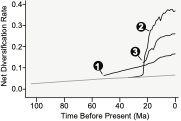
May 2016. Ken Sytsma received the first Wilhelm Hofmeister Endowed Chair through the Botany Department, University of Wisconsin, Madison.

April 2016. Jocelyn Hall, former grad, and Ken Sytsma published the largest to-date historical biogeography of the order Brassicales in Molecular Phylogenetics and Evolution: Biogeography and diversification of Brassicales: a 103 million year chronicle.
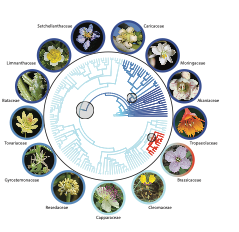
April 2016. Jeff Rose and Ricardo Kriebel’s morphospace analysis of moss sporophyte shape evolution (over 450 my) supermatrix phylogenetic tree of Bryophyta was published in the American Journal of Botany.

February 2016. Daniel Spalink’s thesis chapter entitled “Evolution of geographical place and niche space: patterns of diversification in the North American sedge (Cyperaceae) flora” - based on a supermatrix of most North American sedges and 200,000 georeferenced specimens - was published in Molecular Phylogenetics and Evolution.
January 2016. Brent Berger, former grad, along with Ricardo Kriebel, Daniel Spalink, and Ken Sytsma published “Divergence times, historical biogeography, and shifts in speciation rates of Myrtales” in Molecular Phylogenetics and Evolution.
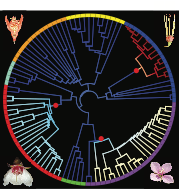


July 2016. Elena Conti (1994) and Chris Pires (2000) - two of the many former Sytsma lab members reuniting at BSA 2016
June 2016. Daniel Spalink has accepted a post-doc position working with Lynn Bohs in the Biology Department at University of Utah in Salt Lake City. After a productive year working on our NSF Dimensions of Biodiversity grant, Daniel is headed to work on Solanum, Capsicum, and Lycianthes (photo from Lynn Boh’s website: http://solanaceaesource.org/

July 2016. Ricardo Kriebel just published his massive and lavishly illustrated monograph of Conostegia (Melastomataceae) in PhytoKeys.
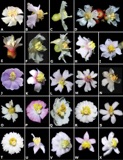
August 2016. Botanical Society of America 2016 - Savannah, Georgia: Ken Sytsma, Chloe Drummond, and Jeff Rose attended BSA and presented papers. Members of the lab group were authors on 8 BSA abstracts.

August 2018. Congratulations Chloe Drummond! - off to a post-doc with Dr. Tanya Renner at Penn State to resolve taxonomic relationships, elucidate the genomic architecture underlying biochemical diversity, and identify adaptations for arthropod prey digestion using phyla/comparative genomics among the carnivorous plants within Caryophyllales. Phot from Tanya Renner’s website: https://sites.psu.edu/rennerlab/research/
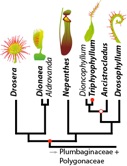
July 2018. Botanical Society of America 2018 - Savannah, Georgia: Ken Sytsma, Chloe Drummond, Jeff Rose, Ricardo Kriebel, Alexa DiNicola attended BSA and presented papers. The lab group sponsored the symposium “Evolutionary History, Biogeography, and Floral Morphometrics of Salvia (Lamiaceae)”

July 2018. John Zaborsky defends his Ph.D. thesis! - Temporal and biogeographical history of the sesame family (Pedaliaceae) with a focus on the succulent genera Uncarina and Sesamothamnus
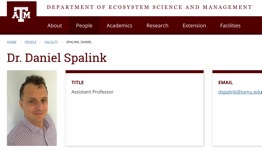
June 2018. Daniel Spalink accepts Assistant Professor position & Herbarium Director at Texas A&M - Department of Ecosystem Science and Management - congratulations!
June 2018. Another NSF Dimensions of Biodiversity paper is published - led by our lab and first authored by Daniel Spalink: Spatial phylogenetics reveals evolutionary constraints on the assembly of a large regional flora. American Journal of Botany
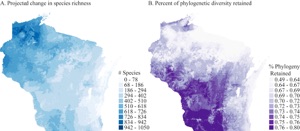

June 2018. Ken Sytsma teaches Field Botany in northern Michigan for 5 weeks. Shown here is Sleeping Bear National Lakeshore - one of a dozen field trips for the course.
May 2018. Jeff Rose defends his Ph.D. thesis! - “Perspectives on Phlox: Evolutionary Trends in Polemoniaceae (Ericales) at Four Different Taxonomic Scales”


April 2018. Daniel Spalink’s paper “The spatial structure of phylogenetic and functional diversity in the United States and Canada: an example using sedges (Cyperaceae)” published in Journal of Systematics and Evolution
August 2017. NSF DEB 3 year award!
Phylogenetics, biogeography, and morphological evolution of an adaptive radiation - Salvia (Lamiaceae)
- collaborative proposal with former lab member Dr. Bryan Drew
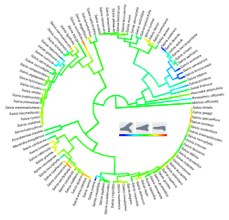
March 2017. Alexa DiNicola receives prestigious 3-year NSF Graduate Fellowship!

February 2017. Bryan Drew, Ricardo Kriebel, Chloe Drummond, and Ken Sytsma (and other members of the Salvia Working Group publish paper “Salvia united: the greatest good for the greastest number” published in Taxon
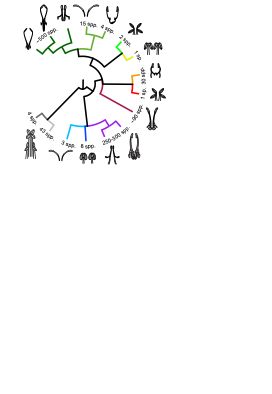
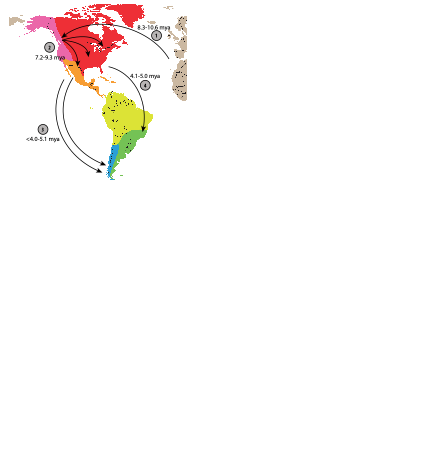
February 2018. Jeff Rose’s chapter 1 of his thesis is published in Molecular Phylogenetics and Evolution: “Phylogeny, historical biogeography, and diversification of angiosperm order Ericales suggest ancient Neotropical and East Asian connections”.

January 2018. The phylogenomic analysis of Brassicales is published in American Journal of Botany along with previous graduate students Chris Pires and Jocelyn Hall and the Brassicales Working Group: “Brassicales phylogeny inferred from 72 plastid genes: a reanalysis of the phylogenetic localization of two paleopolyploid events and origin of novel chemical defenses.”
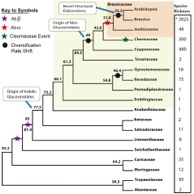
December 2017. Ricardo Kriebel and Ken Sytsma publish a phylogenetic analysis of pollen shape/size morphospace in PLoS ONE: “Shifts in pollen shape and size in the order Myrtales using Ornstein-Uhlenbeck models.”
November 2017. Bryan Drew and Ken Sytsma publish Mentheae paper for special symposium volume on Amphitropical Disjuncts in the American Journal of Botany: “Amphitropical disjunctions in New World Menthinae (Lamiaceae): three Pliocene dispersals to South America following late Miocene dispersal to North America from Old World.”
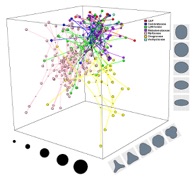

July 2018. Chloe Drummond defends her Ph.D. thesis! - Phylogeography of the western North America - Great Lakes Region disjunct: patterns, case studies, and implications for future comparative research
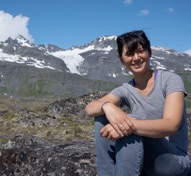
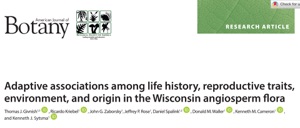
March 2018. Another publication in the long-saga of Brassicales evolution published in American Journal of Botany special issue “Using and Navigating the Tree of Life” - “Brassicales phylogeny inferred from 72 plastid genes: a reanalysis of the phylogenetic localization of two paleopolyploid events and origin of novel chemical defenses”. In collaboration with former Ph.D. students (and their students) Chris Pires, Jocelyn Hall.
October 2020. Special issue on the “Evolution, Pollination Biology and Species Richness of Salvia” published in International Journal of Plant Sciences based on our BSA symposium - includes four papers from our lab

October 2020. “Pollinator shifts, contingent evolution, and evolutionary constraint drive floral disparity in Salvia (Lamiaceae): Evidence from morphometrics and phylogenetic comparative methods” is published in Evolution - Ricardo Kriebel is lead author
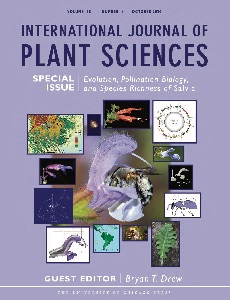
January 2021. Jeff Rose publishes thesis chapter in Systematic Biology: “Out of Sight, Out of Mind: Widespread Nuclear and Plastid-Nuclear Discordance in the Flowering Plant Genus Polemonium (Polemoniaceae) Suggests Widespread Historical Gene Flow Despite Limited Nuclear Signal”
September 2018. Congratulations Jeff Rose! - off to a post-doc with Dr. Erin Tripp at University of Colorado, Boulder to study the genomic evolution in pigment genes of Ruellia (Acanthaceae). Photo from Erin Tripp’s webpage: https://trippreport.com/ruellia-floral-color/



October 2020. Ferhat Celep publishes monumental “Pollination ecology, specialization, and genetic isolation in sympatric bee pollinated Salvia (Lamiaceae)” in International Journal of Plant Sciences
November 2019. Prof. Ferhat Celep joins the lab with a one-year faculty grant. Will be working on various projects including the radiation and biogeography of Turkish and other mid-east Salvia - Welcome!
September 2019. Welcome Cara Streekstra! - Curatorial Manager at Botany Greenhouses and Gardens - joins our lab to conduct Masters research on the Phlox divaricata complex
September 2018. Congratulations John Zaborsky! - hired to complete the long awaited Flora of Wisconsin
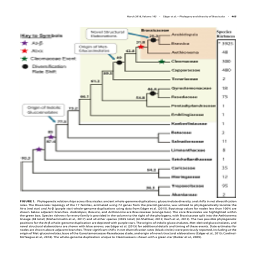
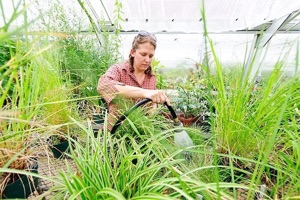
April 2019. Daniel Spalink publishes Ph.D. thesis chapter “Phylogeography, population genetics, and distribution modeling reveal vulnerability of the Atlantic Coastal Plain Flora: a case study of Scirpus longii (Cyperaceae).” in Molecular Ecology
April 2019. With Ricardo Kriebel post doc and collaborator Bryan Drew, the first next generation sequencing paper across Salvia is published in American Journal of Botany - “Tracking the temporal shifts in area, biomes, and pollinators in the radiation of Salvia (sages) across continents: leveraging Anchored Hybrid Enrichment and targeted sequence data”
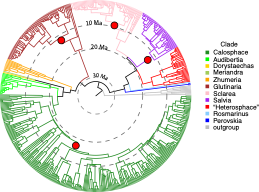

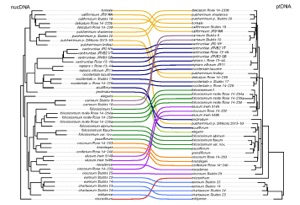
June 2021. Cara Streekstra successfully defends her masters thesis: “Morphological variation and phylogenetics of the Phlox divaricata (Polemoniaceae) complex in eastern North America.” She used a combination of traditional and modern elliptical fourier morphometrics and genotyping-by-sequencing to examine population variation and relationships between notched and un-notched petal forms. Congratulations!
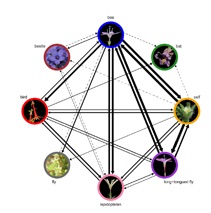
April 2021. Jeff Rose publishes thesis chapter in Evolution: “Complex interactions underlie the correlated evolution of floral traits and their association with pollinators in a clade with diverse pollination system”. This paper tested the 60 year-old Grant and Grant hypothesis about pollinator evolution within Polemoniaceae.

December 2021. Nicole Mitidieri Rivera joins the lab as a graduate student. She comes with considerable experience working on Ficus in Peru and will integrate morphological, phylogenetic, and biogeographical information into her research. Welcome!
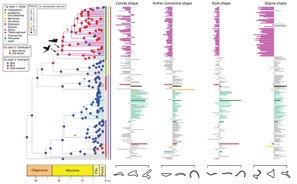
October 2022. “Western North American plants disjunct in the Great Lakes Region – 40 years after Marquis and Voss” is published in the International Journal of Plant Sciences - Chloe Drummond, Ted Cochrane, Ken Sytsma authors
November 2021. “Sage insights into the phylogeny of Salvia: Dealing with sources of discordance within and across genomes” is published in a special issue on Phylogenetic Discordance in Plant Systematics in Frontiers in Plant Sciences - Jeff Rose is lead author
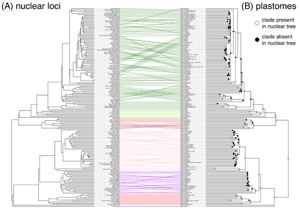
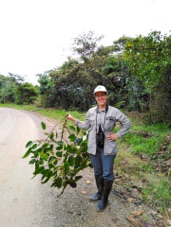
October 2021. Yushin Wei joins the lab as a graduate student. She spent much of the summer in western North American collecting Frasera (Gentianceae) and especially throughout the range of the F. speciosa.

July 2021. Lab members present three talks at the BSA 2021 Conference:
1> Sage insights into the phylogeny of Salvia (Lamiaceae): addressing nuclear and cyto-nuclear discordance
2> Stigma shape shifting in sages (Salvia: Lamiaceae) – hummingbirds guided the evolution of New World floral features
3> Global drivers of diversification and assembly are spatially structured
August 2021. Lab members join the weekend Wisconsin State Herbarium Botany Foray in Eau Claire County, WI and collect over a 1,000 plants, fungi, and lichen species
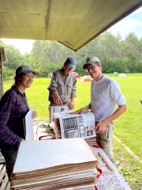
December 2022. Yushin Wei successfully passes her Ph.D. prelims!
The Systematics and Biogeography of Frasera
(Gentianaceae) in North America - advised by Ken Sytsma and Ingrid Jordon-Thaden
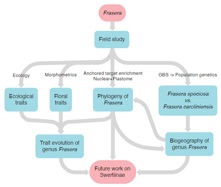
August 2022. Ken Sytsma becomes Chair of the Botany Department - for a second time (and gets a second office!)

July 2022. Lab members Yushin Wei, Nicole Mitidieri Rivera, and Cara Streekstra particpate in the month-long trip to Beringia and join the Botanical Society of America conference in Anchorage, AK
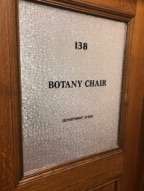
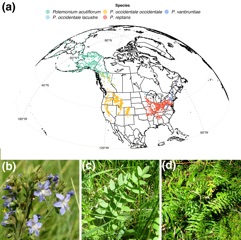
July 2023. Former lab members and Salvia experts - Bryan Drew and Jay Walker - botanizing in northern California
March 2022. “A timeframe for mint evolution: towards a better understanding of trait evolution and historical biogeography in the Lamiaceae” is published in the Botanical Journal of the Linnean Society - Jeff Rose is lead author
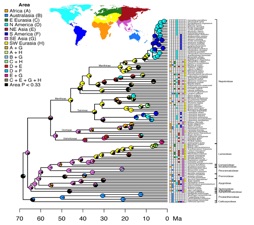
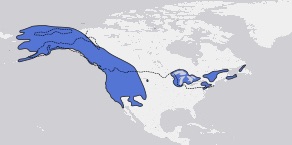
May 2022. “Stigma shape shifting in sages (Salvia: Lamiaceae) – hummingbirds guided the evolution of New World floral features” is published in a special issue on Evolution in the Neotropics in the Botanical Journal of the Linnean Society - Ricardo Kriebel is lead author
January 2023. “Phylogeography and genetic variation in Western Jacob’s Ladder (Polemonium occidentale) provide insights into the origin and conservation of rare species in the Great Lakes Region” is published in Molecular Ecology - Jeff Rose is lead author
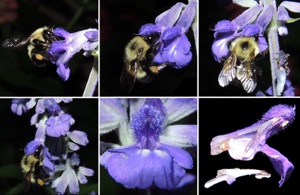

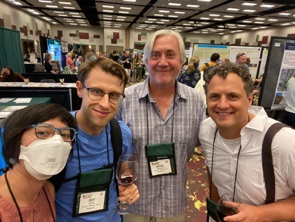
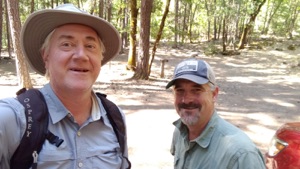
January 2023. “Evolution of anther connective teeth in sages (Salvia, Lamiaceae) under pressure by bee and hummingbird pollinators” is published in Flora - Ricardo Kriebel is lead author
July 2023. Mini-Sytsma lab reunion at the Botanical Society of America in Boise, ID - Chloe Drummond, Jeff Rose, Bryan Drew, Daniel Spalink

